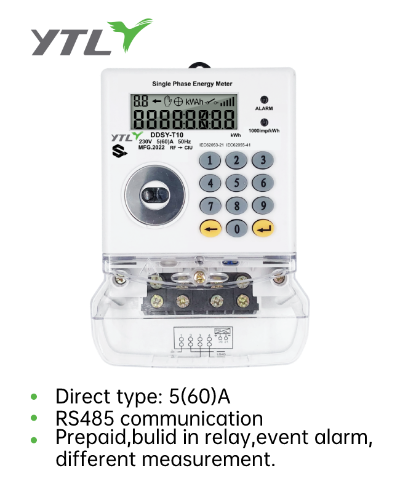 A prepayment electricity meter, also known as a pay-as-you-go meter or a smart meter, is a type of electricity meter that requires consumers to pay for their electricity before they use it. This is in contrast to traditional postpaid meters, where consumers are billed for their electricity usage at the end of a billing period.
A prepayment electricity meter, also known as a pay-as-you-go meter or a smart meter, is a type of electricity meter that requires consumers to pay for their electricity before they use it. This is in contrast to traditional postpaid meters, where consumers are billed for their electricity usage at the end of a billing period.
The prepayment electricity meter works by allowing consumers to purchase electricity credits in advance. These credits are then loaded onto the meter and used up as the consumer uses electricity. When the credits run low, the consumer must top up the meter with more credits in order to continue using electricity.
One of the key benefits of prepayment electricity meter is that they help consumers manage their energy usage and expenses more effectively. By allowing consumers to pay for their electricity in advance, these meters can help prevent unexpected high bills and allow consumers to budget their energy expenses more easily. This can be particularly helpful for low-income households or those on a tight budget.
Another advantage of prepayment electricity meter is that they can help reduce the risk of energy debt. Since consumers must pay for their electricity in advance, there is no risk of accumulating a large energy bill that they are unable to pay. This can help prevent disconnections and ensure that consumers have ongoing access to electricity.
In addition, prepayment electricity meter can also help promote energy conservation. By making consumers more aware of their energy usage and expenses, these meters can encourage them to use electricity more efficiently and reduce waste.
There are also some potential drawbacks to prepayment electricity meter. For example, some consumers may find it inconvenient to have to top up their meter regularly, especially if they are unable to access a top-up point easily. In addition, there may be concerns about the cost of electricity credits and the potential for consumers to be charged higher rates than those on postpaid meters.
In conclusion, prepayment electricity meter are a useful tool for helping consumers manage their energy usage and expenses more effectively. By allowing consumers to pay for their electricity in advance, these meters can help prevent unexpected high bills, reduce the risk of energy debt, and promote energy conservation. However, it is important to consider the potential drawbacks and ensure that prepayment meters are accessible and affordable for all consumers.

 English
English 简体中文
简体中文














